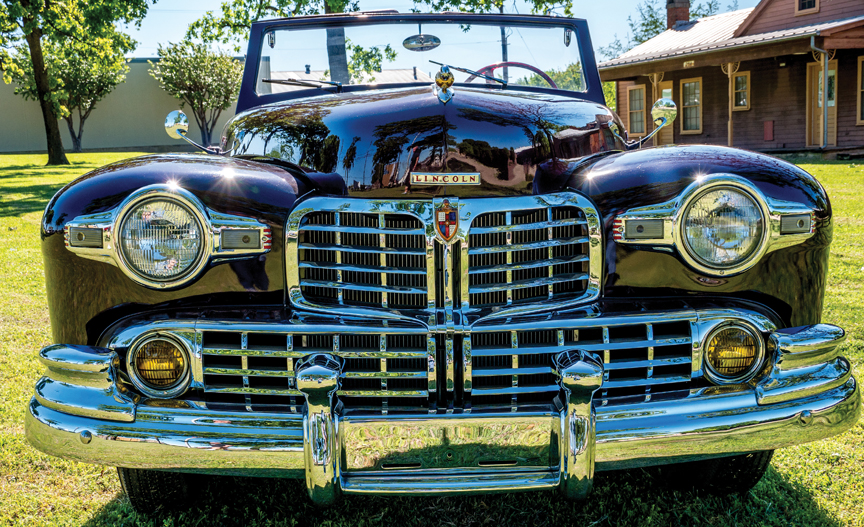
In 1948, the Ford Motor Company gave Babe Ruth a regal blue Lincoln Continental in recognition of his remarkable career as the greatest baseball player of all time. He drove across the country in the stylish art deco vehicle, making speeches, signing autographs and offering tips to Little League teams.
The luxury car fit him perfectly. It was big, strong and a major presence on the road and wherever it was parked. If you saw what became known as the New York Yankee navy blue Lincoln, you knew The Babe might be nearby. After his death in August of that same year, his car became a museum piece and then a traveling attraction as it was toured around on a trailer in a clear plastic cage, so folks could take a look at it and imagine The Bambino behind the steering wheel.
Except for the color and hardtop, the one now in Arnold Petsche’s remarkable collection of more than 50 automotive masterpieces is just like the Babe’s.
Following the end of the Second World War, America’s automobile plants resumed the business of making cars. Civilian auto manufacturing had come to an end in 1942 when the country’s assembly lines were transformed to build weapons and machines for the war that would ultimately lead to victory in Europe and across the Pacific.
As a result of Edsel Ford’s determination to compete with GM’s Cadillac and the Chrysler Imperial, the Lincoln Continental was introduced in 1939, spawning the personal luxury car segment.

After the war, it received a significant makeover inside and out.
Although you could get one with a bolted-on hardtop like the Bambino’s, the standard version of the car was as a cabriolet convertible breezing along thoroughfares like streamlined works of art.
The 1948 model, produced with a 292-cubic inch, L-head motor with hydraulic valve lifters, was the final V-12 engine created by an American automaker.
Recognized as one of the last-built cars to be awarded the status of “Full Classic” by the Classic Car Club of America, this Lincoln model is one of the most collectibles of the era.
Charles Eller is the curator (a title he defines as being a fancy word for keeping everything polished and running) of Petsche’s collection spanning a good portion of the 20th century. He explains how the Lincoln came to be among their assortment of pristine-quality vehicles:
“We found this one in a St. Louis car museum in 2013, cast the winning bid and brought it home to Arlington. We pulled the motor that had about 50,000 miles on it, and rebuilt it to original specifications. Engines in those days were pretty well spent after traveling just about that far.
“Even with the flathead V-12, it delivered only about 120 horsepower. Lincoln said it could reach speeds of 75 miles per hour, but it really tops out at about 60 – although, that was just fine for the highway speed limits of the day.”
Maybe it’s just for show that the speedometer goes all the way to a very ambitious 110.
Speaking of the dashboard and instrument panels, the array is a dazzling presentation of a massive speaker grille, a big clock to match the speedometer, chrome laden dials, buttons, switches and a wonder bar Zenith tube radio that takes about 10 minutes to warm up.
Hemmings Collector Car Marketplace describes the imposing front end: “All eight sections are made of diecast metal and chrome plated. A massive front bumper and a pair of die-cast, plated headlamp doors helped create the impression that nearly the entire front end of the car had been dipped in chromium – one of the strategic elements that civilians had been forced to forego during the war years.”
Eller is proud of having one of the remaining 1948 models still around today in Petsche’s storehouse.
Its presence there salutes American automotive history enhanced by the legendary Babe Ruth’s enjoyment of showing off its sibling around the country in the last months of his extraordinary life.
Lincoln ceased production of the first-generation Continental convertibles after building only 1,299 of the 1948 models. The brand was revived as a new generation and was introduced in 1956 and continues today as the company’s flagship sedan.

















